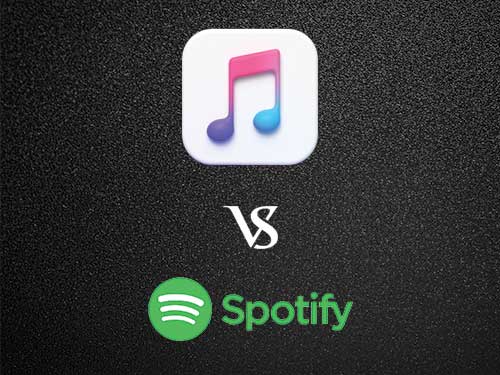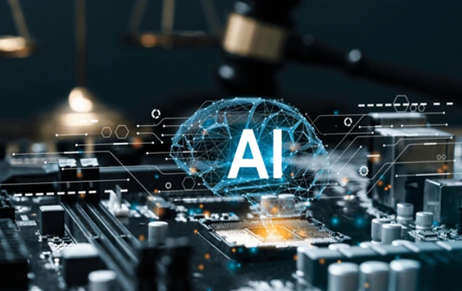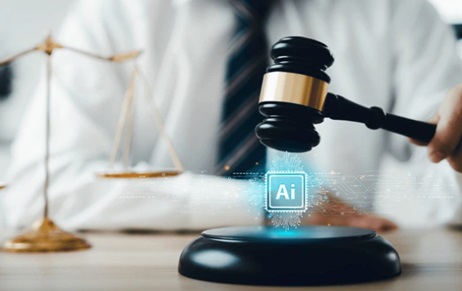Intellectual Property Rights (IPR) are like different keys for different locks. Just like every lock…
Apple Music V. Spotify: A Comparative Study In the Digital Music Marketplace (Part I)
INTRODUCTION
‘Enforcement of IP rights is crucial to the viability of online Information-based goods markets’ – (Bockstedt, Kauffman, & Riggins, 2005)

The way music is transmitted has evolved in line with technological advancements, but the regulations governing copyright and royalties of artists and producers have not kept pace with the advancements of music streaming services. This blog will analyze the impact that music streaming services have had on the rights of the artists and the music industry by critically analyzing two of the most prominent streaming services, Spotify and Apple Music.
MUSIC STREAMING PLATFORMS AND ENFORCEMENT OF IPR
The economic value of music stems from the intellectual property (IP) rights associated with creative works, their performance, and transmission, in addition to its fundamental human and cultural value. These rights are established by national copyright laws, which are molded in major part by international treaties, many of which are administered by the World Intellectual Property Organization (WIPO). The rights granted to writers of original works, as well as those who perform them and assist their extensive dissemination, are defined under copyright law (i.e. record companies and broadcasters).
As digital musical consumption and income have gradually expanded over the past decade, certain sorts of income sources have gained a major position in artists’ royalty monies. Sound recording performance rights, or “neighboring rights,” which reimburse the master holder of the song and the artist, when music is publicly performed, have become an implicitly rising source of money for artists. The rise in popularity of streaming services is partly due to the increasing number of people who listen to music on their mobile devices or through any online medium. In his economic analysis of streaming music services, Thomes (2013) claims that these services are the music industry’s most promising source of revenue and are well-known among consumers.
Music exploitation models and consumption trends in the digital music marketplace
Downloading, streaming, podcasting, and so-called non-interactive streaming are the four primary types of exploitation models currently available in the digital music sector. These configurations aren’t always mutually exclusive, and a single digital music platform can use multiple of them at once. On-demand streaming services give customers the option of choosing when and where they want to listen to music, whether it’s by selecting a single track, a playlist, or letting the digital music service choose for them in an enterprise playlist based on data derived from the customer’s profile or marketing campaigns. Non-interactive streaming is a catch-all term for services in which the consumer has limited control over when to listen to music or a music program.
According to available recording industry data (IFPI, 2020, 2021), streaming services were the leading revenue category in 2019 with a 56.1 percent share of total global recorded music revenues, 42 percent subscription audio streams, and 14.1 percent ad-supported streams and even higher in 2020 with 62.1 percent share of total global recorded music revenues 46 % subscription audio streams and 14.1 percent ad-supported streams and even higher in 2021 with 62.1 percent share of total global recorded music revenues 46 % subscription audio streams According to the IFPI, there were 443 million paid streaming subscription customers at the end of 2020. That’s up from 341 million at the end of 2019, representing a 29.9% increase year over year.
Streaming services, particularly subscription or paid streaming services, have already established themselves as the core offerings of internet music (excluding user-generated services) and the industry’s primary distribution channels. As customers increasingly opt into models based on access and use, the evolution of music streaming appears to be a direct reflection of consumer preferences. This illustrates the fact that multiple variables or forcing functions explain the gradual modification of the interaction between users and music behind the evolution of music consumption.
Artist/Performers’ royalties and intellectual property rights in the digital music marketplace
Download and interactive streaming revenues are usually paid as a percentage of service revenues under private contracts from a streaming platform to a record company or digital distributor that issues a license to the platform and then delivers existing catalog as well as new releases on an output basis. For any recordings given to the streaming service under the license, the licensor will get a negotiated rate. Under the terms of their artist agreement, the licensor will account for and pay the licensor’s featured performers later. The licensor will usually be paid a higher royalty than the featured performers, and the two rates may be calculated differently.
Digital music services also pay performers’ CMOs a percentage of their revenues, which is distributed to both featured and non-featured performers in some countries that have added a remuneration right to the exclusive right of making available to the public performances fixed in phonograms in their legislation. Non-featured artists are only paid when their recordings are used by digital music services in countries that have this remuneration entitlement.
Music streaming services, in order to build their economic business model appeal to consumers around the world, as their ultimate goal is to earn revenue from them, allow users to simply pay a flat monthly fee for an unlimited amount of music they do not own, rather than paying for individual tracks from providers like iTunes/Apple. The appeal is that customers can stream more music than they could if each tune had to be paid for separately. However, even the world’s most prominent digital service providers, such as Spotify and Rhapsody, frequently chose expediency above licenses by selling music to members without negotiating direct licenses (directly from the copyright owners) or pursuing compulsory licenses (obtained without express permission from the copyright holder). One famous instance of this is when Wixen Music Publishing Inc. filed a lawsuit in California against Spotify for allegedly using certain of its songs (such as Tom Petty, the Doors, and Neil Young songs) without the proper license, seeking $1.6 billion in damages and an injunction to restrict the usage of the songs. Famous artists such as Taylor Swift, Adele, and others due to this issue, withheld their music from digital streaming services such as Spotify because they were concerned that their work would be undervalued. This has created a difficult environment for artists who are frequently exploited, making it more crucial than ever for artists to receive the credit they deserve.
Part 2 of this blog aims to critically analyze two of the most prominent music streaming services, Spotify and Apple Music in this regard.
Author: Anuja Saraswat – a student of NMIMS, Kirit P. Mehta School of Law, (Mumbai ), in case of any queries please contact/write back to us at Khurana & Khurana, Advocates and IP Attorney or via email vidushi@khuranaandkhurana.com



